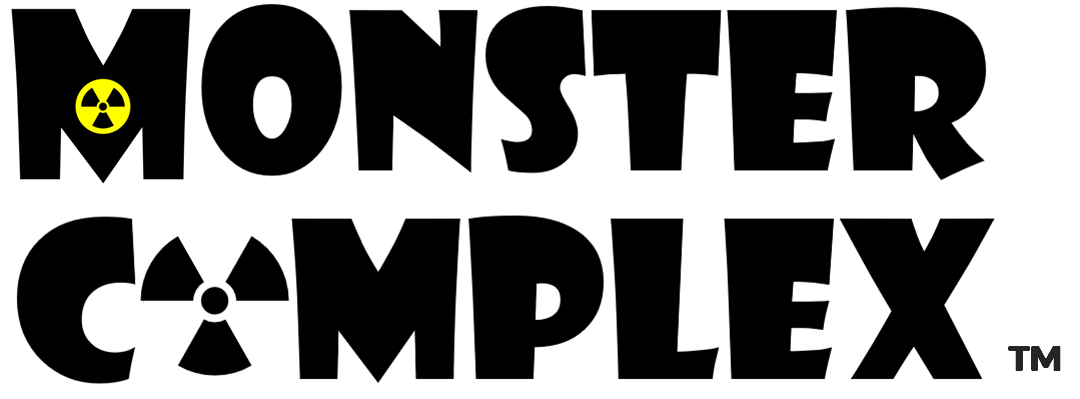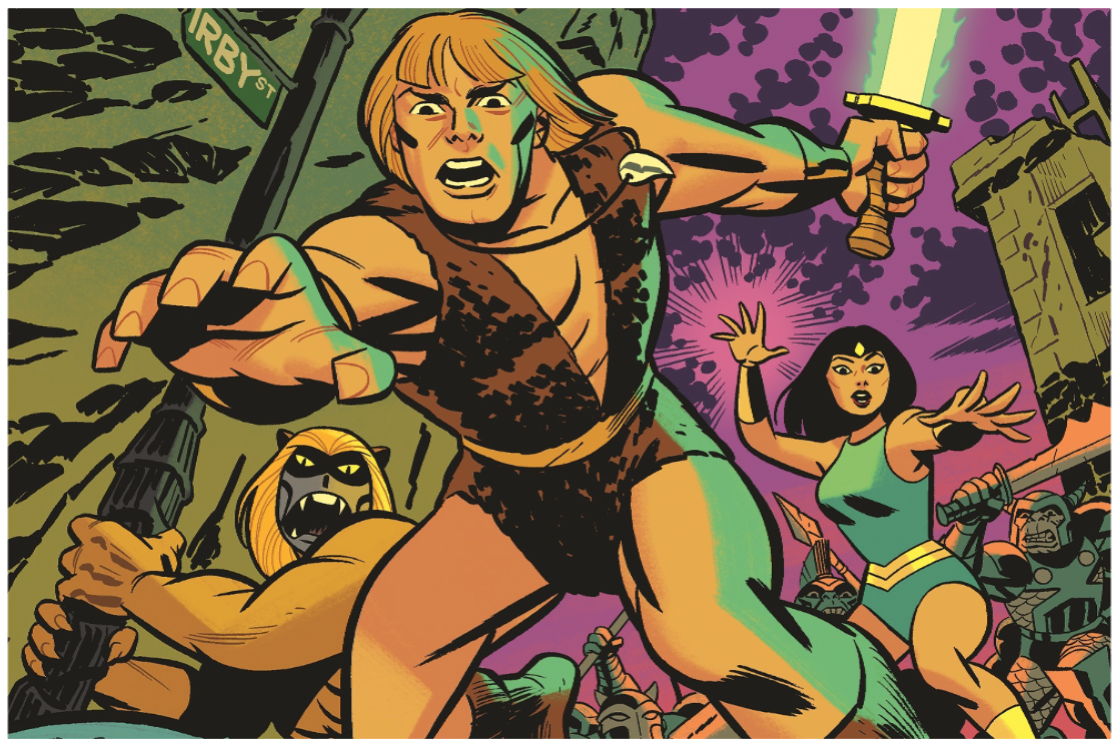Donyae Coles on MIDNIGHT ROOMS: “So many ideas come to you when you’re writing a book.”
Donyae Coles’ debut gothic thriller weaves paranoia and fear into the fabric of a decaying 1840s English estate.
The author and visual artist talks to Monster Complex about the challenges of writing different length works, and how writing horror fiction was… an accident.
Set in a foreboding Gothic mansion and infused with the heightened paranoia and creeping horror of novels like Catherine House and Crimson Peak, a spine-chilling debut historical thriller from a fresh voice in the genre that will leave you questioning who, or what, you can trust… including your own sanity. Midnight Rooms is a sweeping saga with supernatural undertones set in Victorian England. Vibrating with tension, richly atmospheric—haunted by ghosts, guilt, and familial bonds—it is an electrifying story that will linger in your dreams.
The book’s author, Donyae Coles, talked with Monster Complex about her gothic thriller Midnight Rooms. Coles is an artist and a writer whose work is speculative in nature. She’s been published in Fantasy Magazine, The Root, Pseudopod, and other publications. As a visual artist she works in traditional media, mainly watercolor, acrylic, and ink.
Monster Complex™ uses Amazon affiliate links. As an Amazon associate I earn from qualifying purchases. (At no additional charge to you.)
About the book
Midnight Rooms
by Donyae Coles
England, 1840. Orabella Mumthrope spies an unexpected visitor in her uncle’s parlor. Scruffy in appearance yet claiming to be the scion of a fabulously wealthy family, Elias Blakersby declares a deep desire to make Orabella his wife. The orphaned daughter of a white man and a Black woman—an outsider with no fortune or connections—Orabella never expected to marry.
But her uncle has many debts, and Orabella, curious about the seeming devotion Elias bestows upon her, agrees.
The new bride is quickly whisked away to Korringhill Manor, the Blakersby family estate, and far from everything she knows. Expecting splendor, Orabella is shocked to find decay, skittish servants, and curt elders. But her kind new husband’s loving touch, promises of a happy life together, and his assurances she’ll never want for anything soothe her concerns.
Yet there is a darkness deep within this house. Rooms are locked or hidden away, and the walls seem to thrum with secrets. Orabella can never venture outside unattended; she spends her days having tea with a catatonic sister-in-law and evenings at Elias’s side, dutifully hosting lavish dinners. The darkness soon begins to engulf her, too. Becoming dizzy and drowsy after dinner, she falls into a fitful sleep filled with macabre dreams, and is awakened by blood-curdling screams in the night.
In the morning she rises from her bed covered in mysterious bruises. Confused and terrified, she begins to question where her dreams end and reality begins. The longer Orabella stays in this place, the more she loses parts of herself… how long until she no longer exists?
INTERVIEW: Donyae Coles on MIDNIGHT ROOMS
Q: Before you published your debut novel, you’ve been publishing short stories and poetry. How much is all of this stuff hitting upon the same genres and same ideas? (How do you compare and contrast all this stuff?)
I think the obvious thing is that it’s all horror, lol! Well, not quite all. I have some science fiction and fantasy in there. So even though most of it IS horror, I do write across genre but even then there’s commonality in my work.
Mostly I am writing about Black women/femmes and the issues that impact our lives, sometimes it’s very overt and looms large in the story and other times it’s a subtle nod to reality. I think in a lot of my work I’m trying to turn over the question of “how do we (Black women/femmes) deal with the things that are happening to us?” Sometimes I think of this as inheritance and what we do with the things that we end up holding, the good, the bad, the monstrous.
Sometimes we thrive! And sometimes we just survive. And sometimes we don’t.
Q: What were the best things about exploring a bigger story in your novel MIDNIGHT ROOMS? What was the most challenging part?
Like moving into a larger house, the best thing about it is the space. There was just more space to expand and build with the novel than there is with a short story. And this isn’t to say that the work of the short isn’t also fully gratifying, there are stories that can only be told fast and dirty but some stories just need to cover more area.
The most challenging part was, well, it’s that books cover more area. For me it’s keeping the thematic line pure. There’s so many ideas that come to you when you’re writing a book. Drafting a book is a long process compared to a short story.
When you’re working on a short story, you’re only really with it for a little bit of time, a little bit of space. Most of the craft process isn’t what am I trying to say but more like, how am I going to say this?
But a book can hold many things so you really have to hold yourself back and go ok, what do I want these to say, what are my themes? And you can say a couple of things but you can’t say everything. So sometimes the coolest stuff ends up on the cutting room floor otherwise the themes get lost.
Q: What inspired the ideas behind MIDNIGHT ROOMS? What led you to writing a gothic historical horror thriller?
Honestly the idea for the book started with a silly thought I had. What if the ingenue was a Black girl and when faced with the monster family she assumes it’s all racism instead of cursed family stuff and just endeavors to prove her humanity to people who have none?
You know, she’d be faced with all kinds of situations where the reader would be very aware that she’s in danger but she would just react in this sort of, “If I am respectable and friendly they will come around” manner. It would have likely ended with her realizing that she was about to be murdered and eaten what was really going on and for the family to say something like, “Darling we’re cannibals, not monsters!”
And that certainly would have been a perfectly fine story, but it turns out that I am not a funny writer and when I started actually drafting it turned out my concerns were different. So the framework of the story, the Black ingenue who marries into the old family, the house on the edge of the forest, the off-putting town and servants, those sort of Gothic things stayed but I shed the rest of that concept. Like most first ideas, it wasn’t quite right but it got me to where I really wanted to go.
And, also, I wanted to write something about a Black girl in a big dress.
Q: What are your favorite kinds of horror fiction? What led you to becoming part of this world as an author?
Oh, I don’t know, why would you ask me to choose between angels? I got into writing it by accident though. I thought I was, probably, going to be a romance writer, it seemed more… accessible? I had READ a lot of horror like all kids who grow up to do this.
I read my first big girl horror novels at ten and maybe that’s why I didn’t ever think about becoming a horror writer. Maybe it was a lack of representation among authors, it was the 90s.
But the heart wants what it wants, and I am who I am. I started writing short stories and got accepted by more horror markets than SFF and here we are.
What is a little strange, I think, is that many of my earlier works were cosmic and body horror and I worried it would seem left field to have a Gothic debut. But, honestly, it’s all my playground.
Q: What are your pet peeves about some horror fiction? How do you avoid the same problems with your own writing?
I don’t have pet peeves about any fiction. If a story is not for me, it is simply not for me that doesn’t mean it’s not the perfect story for someone else.
One of the things I do try to be mindful of in my own work though is balancing style with utility. I have a very lyrical style and, especially in longer works, there’s always a draw to let that run wild.
But I’m also trying to tell a story. So, sometimes, it really is a question of, OK this is beautiful but is this communicating what I need it to? I want my work to be accessible and beautiful. But that’s about my aesthetic and no one else’s.
Q: What are the best ways for readers to connect with you? What are the best ways to keep up with your latest author news?
The best way to keep up with me and my news is through my X.com (formally known as Twitter) @okokno. I also have a website where I keep my publications updated with links to all my socials, DonyaeColes.com
More Donyae Coles Online
Black Heritage in Horror: Interview with Donyae Coles (Horror Writers Association)
More from Monster Complex
Complete Siren Series by Jessica Cage: “Mostly I want relatable characters.”
Q&A: Nicole M. Wolverton on her YA horror novel ‘A Misfortune of Lake Monsters’
D.M. Guay: Horror Author Q&A—“My goal is to hope like hell it will make readers laugh.”
Rebecca Roanhorse on wrapping up her fantasy trilogy Between Earth and Sky
Lee Rozelle on his Southern Gothic Bizarro fiction: “I do my best to recode genre stereotypes”
Interview: Brian Martinez on serializing his horror novel TRACKING BLOOD
Jaq Evans Q&A: ‘What Grows in the Dark’—“I try to write stories with moments that freak me out.”
Luke Jennings on continuing KILLING EVE as a free serialized novel online
30+ Black Authors for fans of Horror, Urban Fantasy, and Paranormal Fiction






Interviews with the several authors from the “Weird Tales Presents” project. The legendary magazine is adding original novels, anthologies, and compilations—with horror, sci-fi, and fantasy.